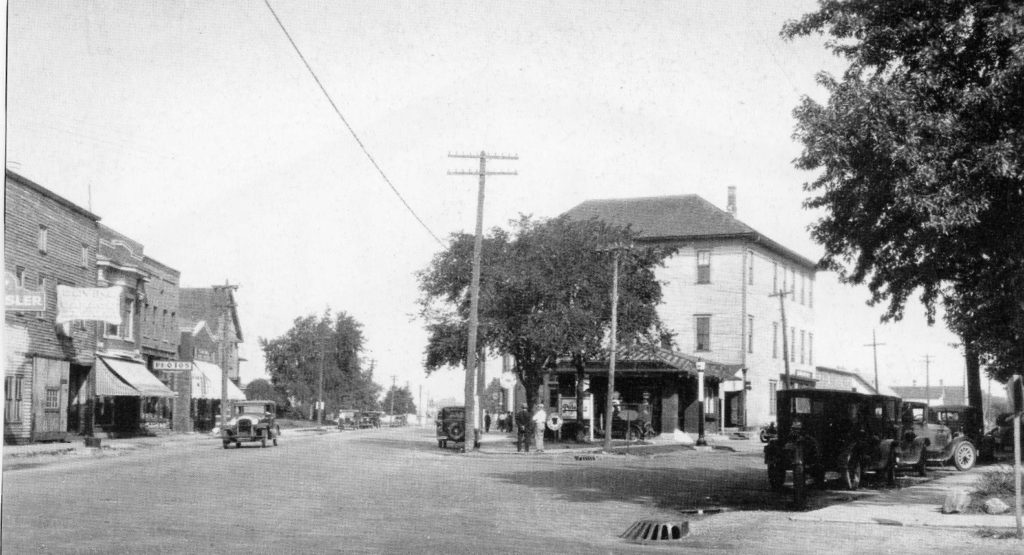
On December 6, 1918, the third floor of the Cookson-Leroy Hardware building was converted to an emergency hospital to care for those suffering with influenza.
During the fall of 1918 the arrival of “flu season” was closely monitored by public health officials in Schoolcraft County. The so-called Spanish influenza pandemic had begun simultaneously in Europe, Asia and the United States and quickly spread around the globe. An estimated 25 percent of Americans came down with the flu and 675,000 Americans died.
The Pioneer Tribune reported that the influenza cases experienced here in October and early November of 1918 were relatively few and quite mild. Meanwhile, the end of the war in Europe on November 11th was cause for a euphoric celebration in Manistique. The factory whistles blew and church and fire bells tolled throughout the city. Mayor William Middlebrook declared a public holiday with businesses and factories closing for the day. Citizens thronged the streets to watch a parade featuring local bands and the Red Cross.
The community’s joy was quickly transformed into dread and grief as increasing numbers of citizens became seriously ill with the flu and subsequent pneumonia. A particularly cruel aspect of the Spanish influenza was that it took its greatest toll on young and seemingly healthy individuals.
By December 6, 1918 the number and severity of the flu cases had mushroomed into a full blown public health crisis. At its peak, there were over 300 flu cases reported in Manistique. Citing the ballooning number of cases, and the failure to report and quarantine those who had become ill, the City of Manistique Board of Health imposed an Influenza Ban.
“All Schools, Public Libraries, Churches, Theatres, Motion Picture Theatres, Billiard and Pool Rooms, Bowling Alleys, Lodge Rooms and Dance Halls shall be closed and kept closed.
All public gatherings and private parties and all loitering in public places is prohibited.
All persons appearing on the streets, in public places and in all places of business shall wear a mask.
No person, except physicians and nurses, shall enter or attempt to enter any house, building, room or place where quarantine regulations have been established.
Nothing shall be taken or removed from any house or place under quarantine which shall be capable of communicating the disease for which house or place may be quarantined.
And be it further resolved that the public authorities be and they hereby are instructed to strictly enforce the foregoing regulations and that any person who shall fail to comply shall be subject to immediate arrest and prosecution and be punished as provided by law.”
The overcrowding at the City Hospital due to the large number of flu cases became unmanageable. Heath officials responded to the crisis by opening an emergency hospital on the third floor of the Cookson-Leroy Hardware building, which usually served as the Oddfellows Lodge room. Twelve patients were immediately moved into the new hospital with separate wards for women and men and a special ward for those suffering from influenza pneumonia. A shortage of nurses due to the war in Europe handicapped local efforts to treat those who were ill at home and in hospitals.
The regulation requiring the wearing of influenza masks (made out of cheese cloth) was lifted after only a week, as it was viewed as ineffective. The remainder of the emergency health regulations remained in effect for the entire month of December before being lifted on December 31, 1918.
The emergency influenza regulations were instrumental in limiting the spread of the disease. By December 12th the number of reported cases in the city had been reduced to 153, but six deaths were also reported. The following week 75 influenza cases were reported in Manistique with five more deaths including two young mothers and three children. On December 26th only six homes in the city remained under quarantine and the number of cases at the emergency hospital had been reduced to seven—all improving.
Schools in Manistique finally were allowed to reopen on January 6, 1919. The epidemic had brought grief and sadness to many families. The flu had also ravaged the townships where additional deaths occurred. It caused a major disruption in the lives of the people with a severe negative economic impact to those businesses that were forced to close and the employees who were unable to work. Most shocking of all, the average life expectancy of people living in the United States had been reduced by 12 years due to the effects of the flu.
